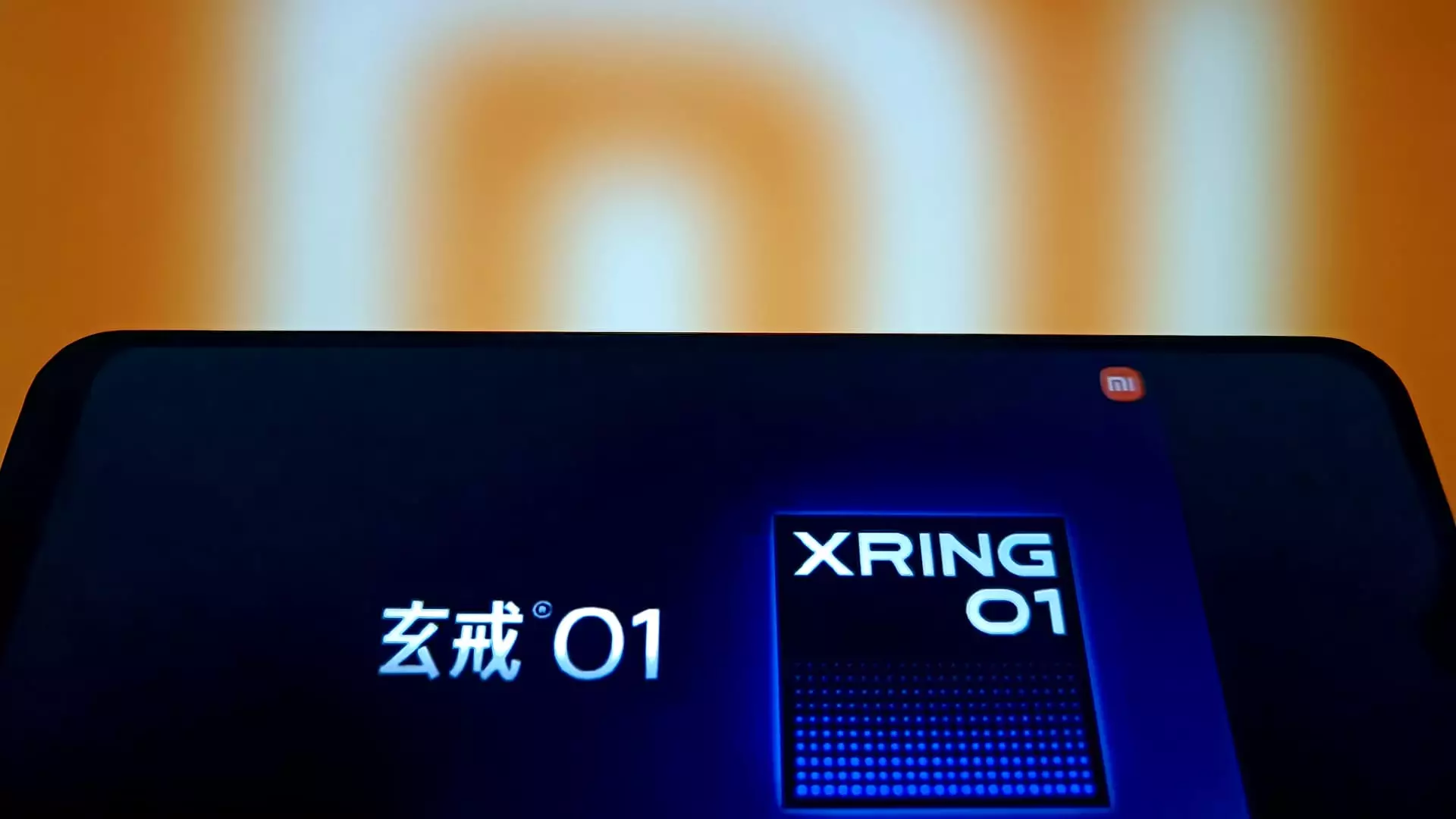In the ever-evolving landscape of technology, competition often drives innovation, yet it can also lead to a fierce battle for consumer dollars. This is particularly evident in the smartphone sector, where companies fight tooth and nail for market dominance. Xiaomi, a Chinese smartphone maker, is declaring war on Apple’s iPhone models by introducing its latest offering—the Xiaomi 15S Pro. With an eye-popping starting price of 5,499 yuan (approximately $764), Xiaomi is crafting a narrative of affordability against Apple’s higher-priced options. The iPhone 16 Pro begins at 7,999 yuan, while its Pro Max variant soars to 9,999 yuan. In this price battle, Xiaomi is leveraging state subsidies, making its smartphone not just a compelling option but a financially appealing one.
A Chip Off the Old Block
In a powerful bid to draw technical comparisons between itself and Apple, Xiaomi’s CEO Lei Jun has touted the company’s new Xring O1 processor as a strong contender against Apple’s A18 Pro. At a launch event, he claimed that the Xring O1 surpasses its Apple counterpart in key technical areas, such as operating with less heat while running resource-intensive games. However, these claims remain to be fully verified by external parties. Xiaomi’s ambitious foray into chip-making is further underscored by its plans to invest a staggeringly large sum of 200 billion yuan in R&D over the next five years, as announced by Lei. This is a risky, but necessary, step in a time when U.S. restrictions on advanced semiconductor technologies threaten China’s competitive edge in the global tech arena.
A Price Point with Purpose
Xiaomi is not just launching a smartphone; it’s positioning itself as a champion of affordability in the tech arena. By capitalizing on the Chinese government’s subsidy schemes, the company is crafting a strategy that appeals to budget-conscious consumers who are increasingly seeking value without sacrificing performance. In an economy where loyalty to brand names is often costly, Xiaomi’s pricing strategy offers a meaningful alternative. It’s not just a matter of choosing a cheaper phone; it’s about empowering consumers to make smarter financial choices. This pricing strategy could make Apple’s luxury brand feel less unassailable and more vulnerable to competition.
The Broader Influence of AI and Automotive Ventures
While Xiaomi primarily garners attention for its smartphones, it is diversifying its portfolio into other technology sectors, notably electric vehicles. Last spring, the company launched its first electric model, the SU7 sedan, at a price point that undercut Tesla’s Model 3 by nearly $4,000. This move further illustrates Xiaomi’s strategy to disrupt established markets by leveraging competitive price points. Lei’s announcement of their forthcoming SUV, the YU7, reveals how the company plans to continue its trend of offering advanced technology at accessible prices. Interestingly, the diversion into automotive technology raises questions about Xiaomi’s long-term vision. Is it scattering its efforts too thinly, or is it building a multi-faceted empire capable of reshaping consumer technology as we know it?
Challenges Ahead
Despite its aggressive strategies, Xiaomi faces significant challenges, particularly concerning brand perception and market trust. The unfortunate incident involving a crash of one of its SU7 vehicles, which resulted in three fatalities, will likely cast a long shadow over the brand’s reputation in the automotive space. Safety is paramount, and consumers may hesitate to trust a new entrant in a market typically dominated by established players. Moreover, stringent regulations mandating more cautious language in marketing could complicate how Xiaomi communicates its technological prowess and capabilities.
Additionally, in a climate where Apple remains unassailable in quality perception, Xiaomi might find it difficult to gain footing with consumers who prioritize brand loyalty formed from years of experience with premium products. While Xiaomi’s plans are robust, turning consumer sentiment is another mammoth task that doesn’t solely rely on competitive pricing or innovative claims.
The Future of the Tech Rivalry
As Xiaomi ventures into this uncertain territory filled with both opportunities and challenges, one can’t help but view this as either a necessary evolution of consumer technology or a perilous gamble. The broader implications of an intense competition like this extend beyond just sales figures; they raise vital questions about innovation, market sustainability, and consumer choices. Xiaomi’s strategy reflects a new wave of liberal capitalism that champions competition and disrupts established monopolies, but whether it achieves long-term success in displacing tech behemoths like Apple remains to be seen. Only time will tell if Xiaomi’s model can withstand the pressures of both innovation and consumer scrutiny.

